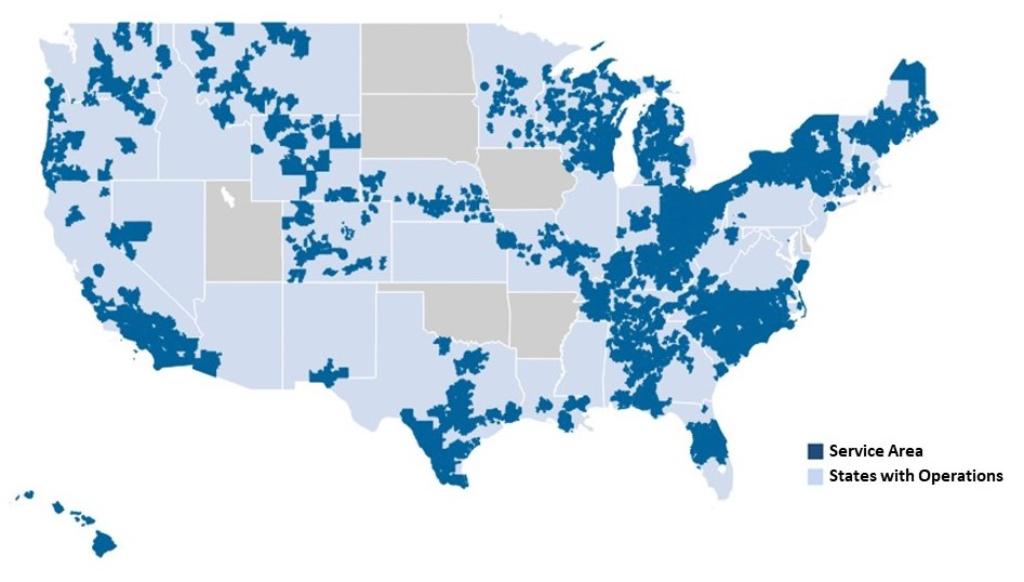PART I.
Item 1. Business.
General Development of Business
Liberty Broadband Corporation (“Liberty Broadband,” “the Company,” “us,” “we,” or “our”) is comprised of two wholly owned subsidiaries, GCI Holdings, LLC (“GCI Holdings”) (as of December 18, 2020) and Skyhook Holding, Inc. (“Skyhook”), as well as an equity method investment in Charter Communications, Inc. (“Charter”).
During May 2014, the board of directors of Liberty Media Corporation (for accounting purposes a related party of the Company) and its subsidiaries (“Liberty”) authorized management to pursue a plan to spin-off to its stockholders common stock of a wholly-owned subsidiary, Liberty Broadband, and to distribute subscription rights to acquire shares of Liberty Broadband’s common stock (the “Broadband Spin-Off”). Liberty Broadband was formed in 2014 as a Delaware corporation.
On December 18, 2020, pursuant to the Agreement and Plan of Merger, dated as of August 6, 2020, entered into by GCI Liberty, Inc. (“GCI Liberty”), Liberty Broadband, Grizzly Merger Sub 1, LLC, a wholly owned subsidiary of Liberty Broadband (“Merger LLC”), and Grizzly Merger Sub 2, Inc., a wholly owned subsidiary of Merger LLC (“Merger Sub”), Merger Sub merged with and into GCI Liberty (the “First Merger”), with GCI Liberty surviving the First Merger as an indirect wholly owned subsidiary of Liberty Broadband (the “Surviving Corporation”), and immediately following the First Merger, GCI Liberty (as the Surviving Corporation in the First Merger) merged with and into Merger LLC (the “Upstream Merger”, and together with the First Merger, the “Combination”), with Merger LLC surviving the Upstream Merger as a wholly owned subsidiary of Liberty Broadband. Prior to the Combination, GCI Liberty consisted of a wholly owned subsidiary, GCI Holdings, an equity method investment in Liberty Broadband, an investment in Charter and other assets and liabilities.
As a result of the Combination, each holder of a share of Series A common stock and Series B common stock of GCI Liberty received 0.58 of a share of Series C common stock and Series B common stock, respectively, of Liberty Broadband. Additionally, each holder of a share of Series A Cumulative Redeemable Preferred Stock of GCI Liberty received one share of newly issued Liberty Broadband Series A Cumulative Redeemable Preferred Stock, which has substantially identical terms to GCI Liberty’s former Series A Cumulative Redeemable Preferred Stock, including a mandatory redemption date of March 9, 2039. Cash was paid in lieu of issuing fractional shares of Liberty Broadband stock in the Combination. No shares of Liberty Broadband stock were issued with respect to shares of GCI Liberty capital stock held by (i) GCI Liberty as treasury stock, (ii) any of GCI Liberty’s wholly owned subsidiaries or (iii) Liberty Broadband or its wholly owned subsidiaries.
In December 2019, Chinese officials reported a novel coronavirus (“COVID-19”) outbreak. COVID-19 has since spread through China and internationally. On March 11, 2020, the World Health Organization assessed COVID-19 as a global pandemic, causing many countries throughout the world to take aggressive actions, including imposing travel restrictions and stay-at-home orders, closing public attractions and restaurants, and mandating social distancing practices, which has caused a significant disruption to most sectors of the economy.
In connection with the Broadband Spin-Off, Liberty and Liberty Broadband entered into certain agreements in order to govern certain of the ongoing relationships between the two companies after the Broadband Spin-Off and to provide for an orderly transition, including a services agreement and a facilities sharing agreement. Additionally, in connection with a prior transaction, GCI Liberty and Qurate Retail, Inc. (“Qurate Retail”) (for accounting purposes a related party of the Company) entered into a tax sharing agreement, which was assumed by Liberty Broadband as a result of the Combination. The tax sharing agreement provides for the allocation and indemnification of tax liabilities and benefits between Qurate Retail and Liberty Broadband and other agreements related to tax matters.
Pursuant to the services agreement, Liberty provides Liberty Broadband with general and administrative services including legal, tax, accounting, treasury and investor relations support. In December 2019, the Company entered into an amendment to the services agreement with Liberty in connection with Liberty’s entry into a new employment arrangement with Gregory B. Maffei, the Company’s President and Chief Executive Officer. Under the amended services agreement, components of his compensation would either be paid directly to him by each of the Company, Liberty TripAdvisor Holdings, Inc. (“TripCo”), GCI Liberty, Inc., and Qurate Retail (collectively, the “Service Companies”) or reimbursed to Liberty, in each case, based on allocations among Liberty and the Service Companies set forth in the amended services agreement, currently set at 18% for the Company but subject to adjustment on an annual basis upon the occurrence of certain events. Following the Combination, GCI
